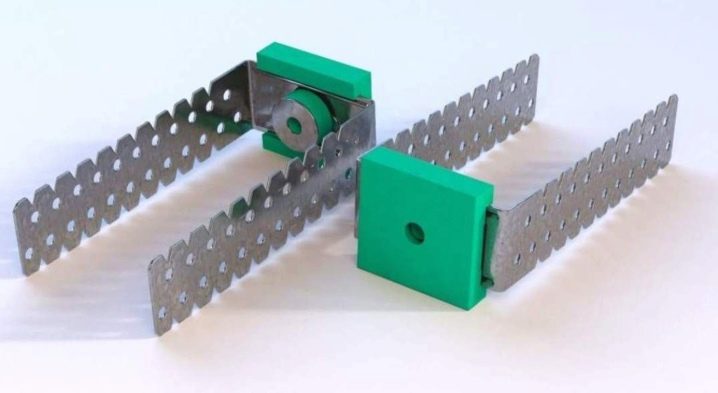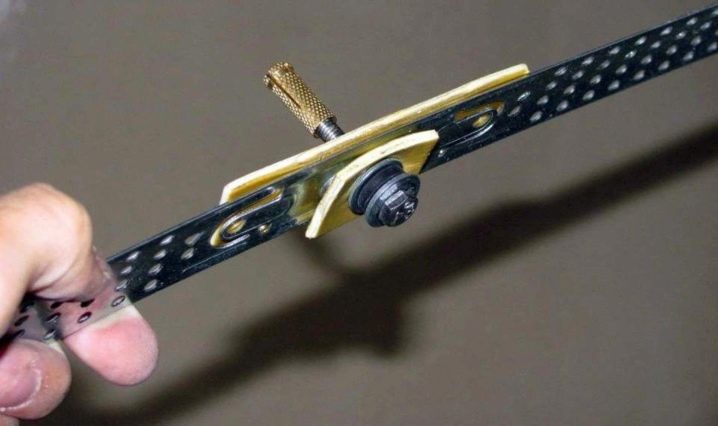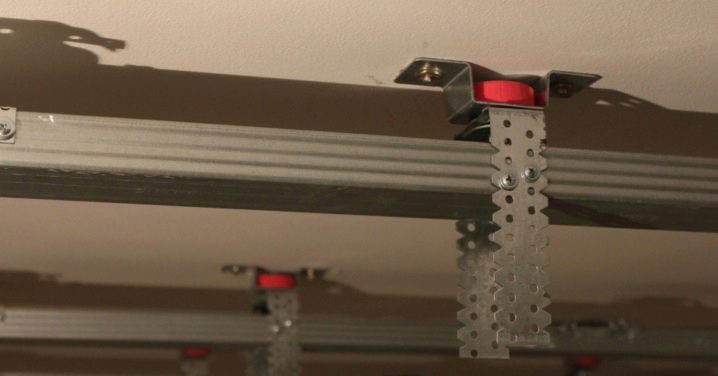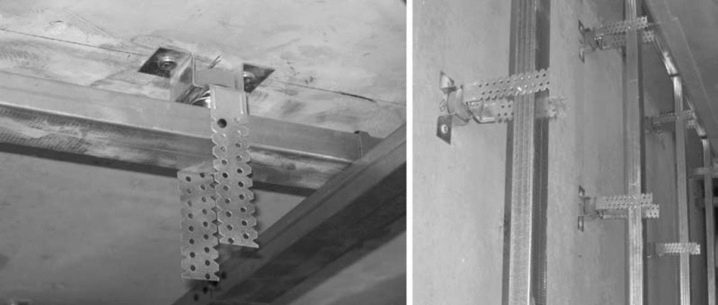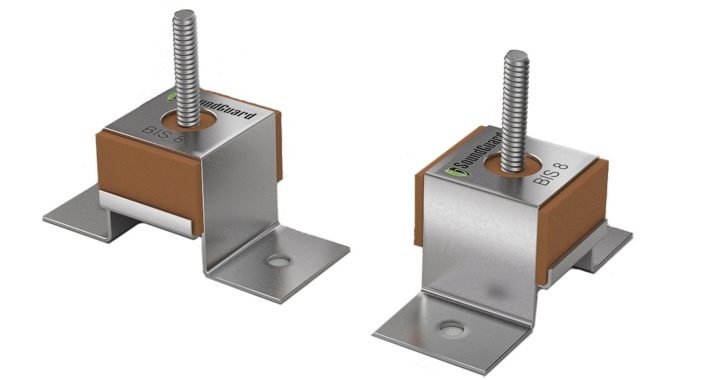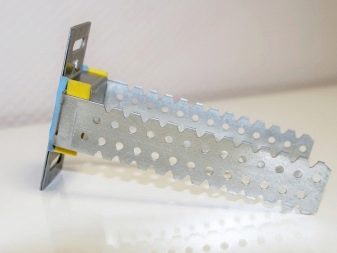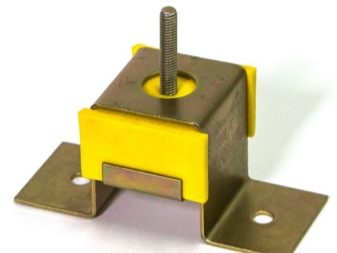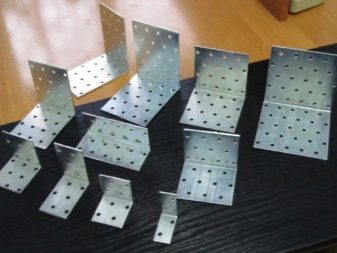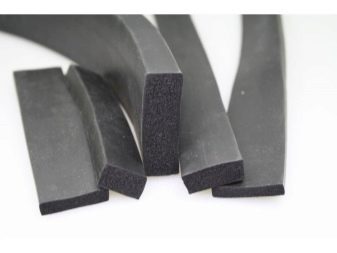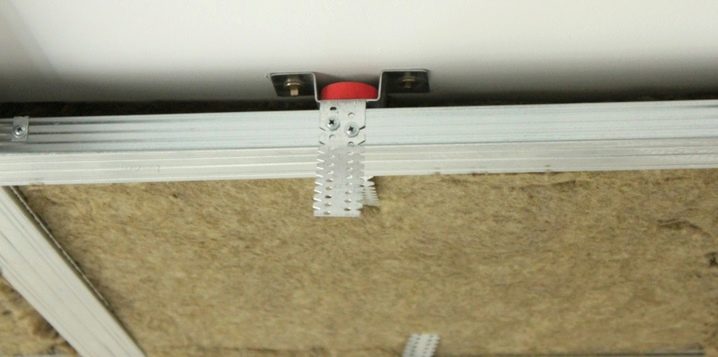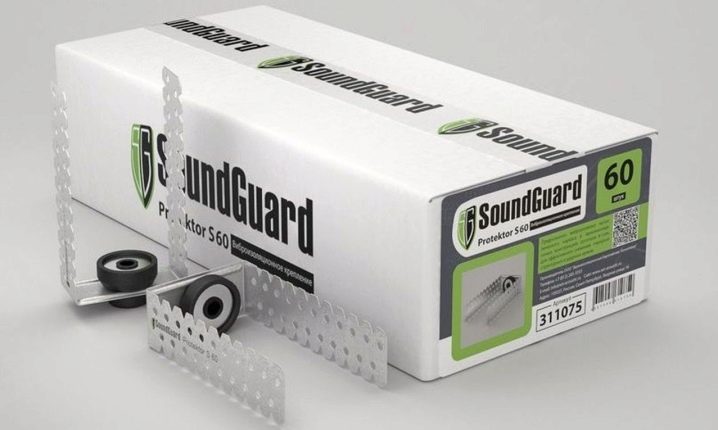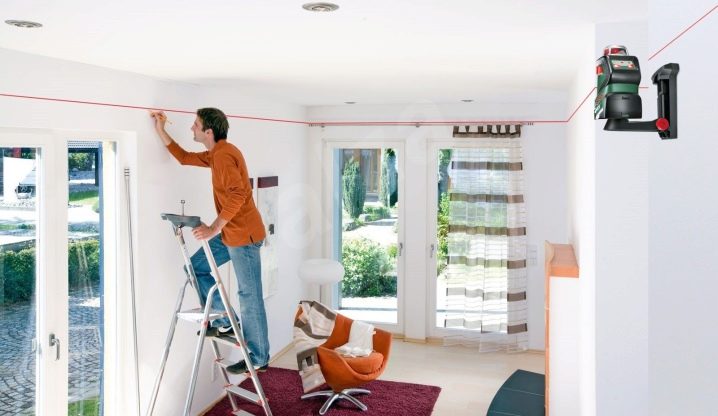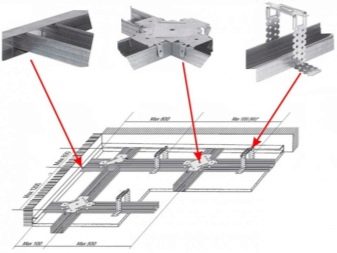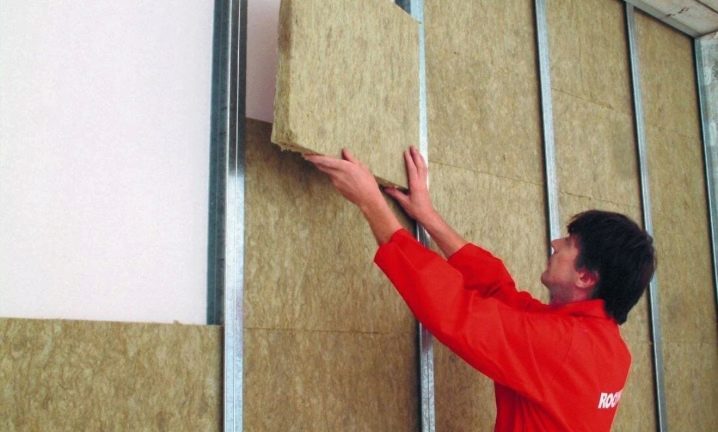Plasterboard dampers: features and specifications
Vibrating support is an important element of soundproofing structures. It perfectly absorbs vibrations and significantly reduces the transmission of structural noise to the framework of noise protection structures.
Specifications
A vibro-suspension is a U-shaped profile made of metal, having an insert made of an elastic material on its upper crossbar, for which rubber, rubber or polyurethane are often used. These soft washers take over the action of the acoustic wave and quench it. This is due to the fact that the strength of the sound waves is spent on compressing the gasket and rotating the hinge element, not reaching the plane of the protective structure. The thicker the polymer absorber, the greater the amplitude of vibration it can extinguish.Mounting vibropodveshcha anchor to the wall or ceiling, and the mating part is attached to the profile with screws.
Benefits
High customer demand and high popularity of vibropodvodsa due to the following advantages of products:
- obstruction of the penetration of low-frequency noise due to high vibro-acoustic properties;
- simplicity of a design and installation;
- versatility (most products can be used when installing both ceiling and wall structures);
- moisture resistance, anti-corrosion properties and long service life.
Kinds
In the modern market of building and finishing materials, vibrating hangers are presented in a wide range. Products are classified by place of use, type of attachment, size and material of noise absorbing washers.
According to the type of fasteners, the box vibration damper is considered the best. It absorbs sound waves as much as possible and prevents them from penetrating the surface of the plasterboard wall or stream. The disadvantages of this type are the high cost and the need to accurately set the studs before installing the profile.
In size, the vibrating hangers for gypsum panels are standard, designed to be mounted on a profile, having a width of 6 cm, and economy class, combined with a narrow profile (4.7 cm wide). According to the field of application, products are divided into wall, ceiling and universal types. According to the material of the manufacture of noise absorbing elements - on products made of rubber, rubber and polyurethane.
All types of vibrating hangers are designed for loads up to 30 kg. Adjusting the depth of the frame is due to the presence of several holes located on the sides of the U-shaped design.
How to do it yourself
You can use homemade vibropodvesyy. For self-creation of such elements you will need perforated plates and pieces of porous rubber. The number of suspensions is calculated individually and depends on the area of decoration of the wall or ceiling.
For example, in a room whose area is 15 square meters, it will take 45-50 vibrating hangers to install the ceiling structure.
Suspension manufacturing technology is very simple. On the middle part of the perforated plate, it is necessary to fasten rectangular rubber elements,after which the edges of the plates should be bent.
For greater efficiency, it is recommended to use several rubber layers. This will contribute to better sound vibration damping, and will increase the soundproofing properties of the plasterboard construction.
After vibropodvesdy will be made, it will be necessary to check their quality. To do this, fix the products on a wooden bar, after which you will need to hit them on the floor. Immediately after the impact, it is worthwhile to observe the vibrations of the plates and determine their ability to dampen vibrations. The faster the oscillations decay, the higher the vibration-insulating properties of the suspensions.
For more information on how to make a vibropodishkoy own hands, see the following video.
How to choose
When choosing vibropodvesdov should remember that the most important quality of products is their durability. On the suspension lies a significant load on the retention of sheets of drywall, sound-proof material and a layer of putty. The simplest types of ceiling hangers are capable of withstanding up to 12 kg of weight load, and low cost options for wall-mounted products will easily hold 15 kg.Reinforced specimens are designed for 30 kg for the wall, and 20 kg for the ceiling.
The sound insulation properties of drywall structures are largely dependent on the ability of the suspension to dampen vibrations and suppress noise. This indicator depends on the quality, thickness and area of the rubber or polyurethane washer. To ensure higher noise absorption, select products with a larger area, thickness and elasticity of the material.
Installation Features
Installing a drywall construction on the ceiling consists of several stages.
- Measurement of the ceiling plane. It is carried out with the help of a building level and consists in determining the lowest angle from which the distance necessary for the placement of the lamp and sound-proof material is measured.
- Mounting guide profiles for the frame. Previously on the metal structures that will be adjacent to the overlap, the sealing tape is glued. This eliminates the appearance of noise bridges, which, in turn, has a beneficial effect on the sound insulation properties of the structure.
- Marking to indicate the installation of rack rails with jumpers.Also noted is the location of vibro-hangers.
- Fastening vibropodvesvetov using dowels with further lowering of their edges.
- Installation of bearing rails frame and their fixing with the help of vibro-hangers.
- Soundproofing Laying on the frame and plasterboard plasterboard.
The installation and operation of the vibrating suspension is no different from the use of conventional direct mounting. The main task is to choose the right fixing material, which depends entirely on the type of ceiling. It is necessary to connect vibro-hangers with the frame profile using press washers or self-tapping screws.
When installing the sound insulation design, it should be understood that the full sound insulation effect cannot be achieved. However, the use of sound-absorbing devices allows a much lower level of ambient noise and makes staying indoors more comfortable.
